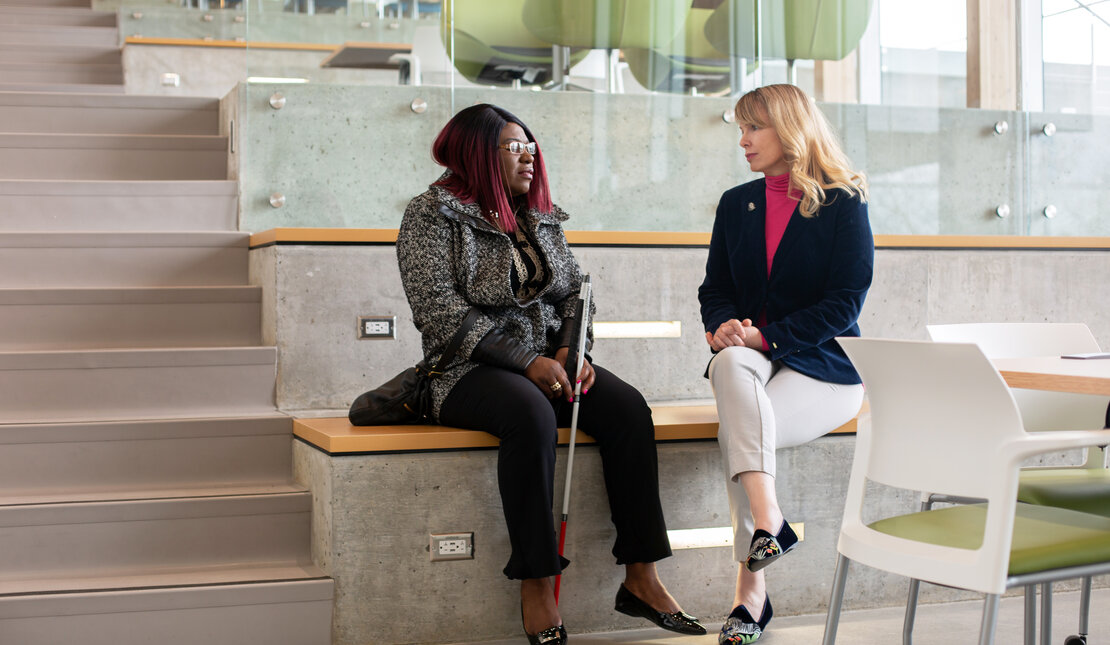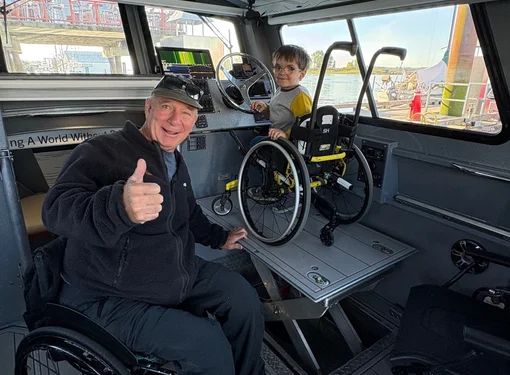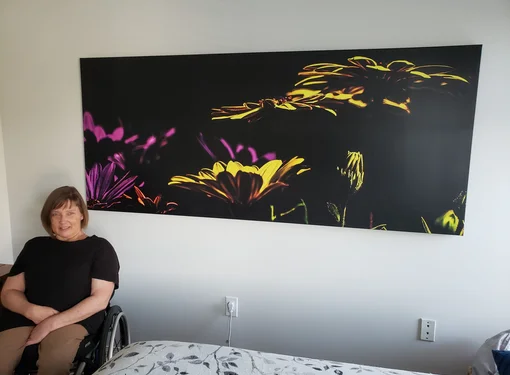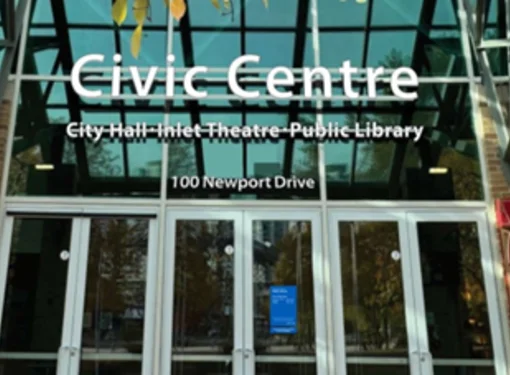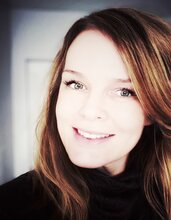Learning from Lived Experience: Debunking Myths about Disability
At best, myths about disability are annoying. At worst, they are a form of discrimination because it prevents people with disabilities from being able to fully participate in our communities.
The flipside of today’s availability of information is misinformation. And unfortunately, while the ground is fertile with knowledge, it also allows the weeds of myths to grow. Whether out of fear or lack of understanding, the result is the same – promoting negative ideas around disability creates attitudinal barriers.
We must work together to dispel these damaging ideas. To bust some of these myths, our Writer Rebecca Blissett teamed up with our Digital Accessibility Specialist Laetitia Mfamobani to talk about barriers from their perspectives and lived experiences: Rebecca has hearing loss, and Laetitia is blind.
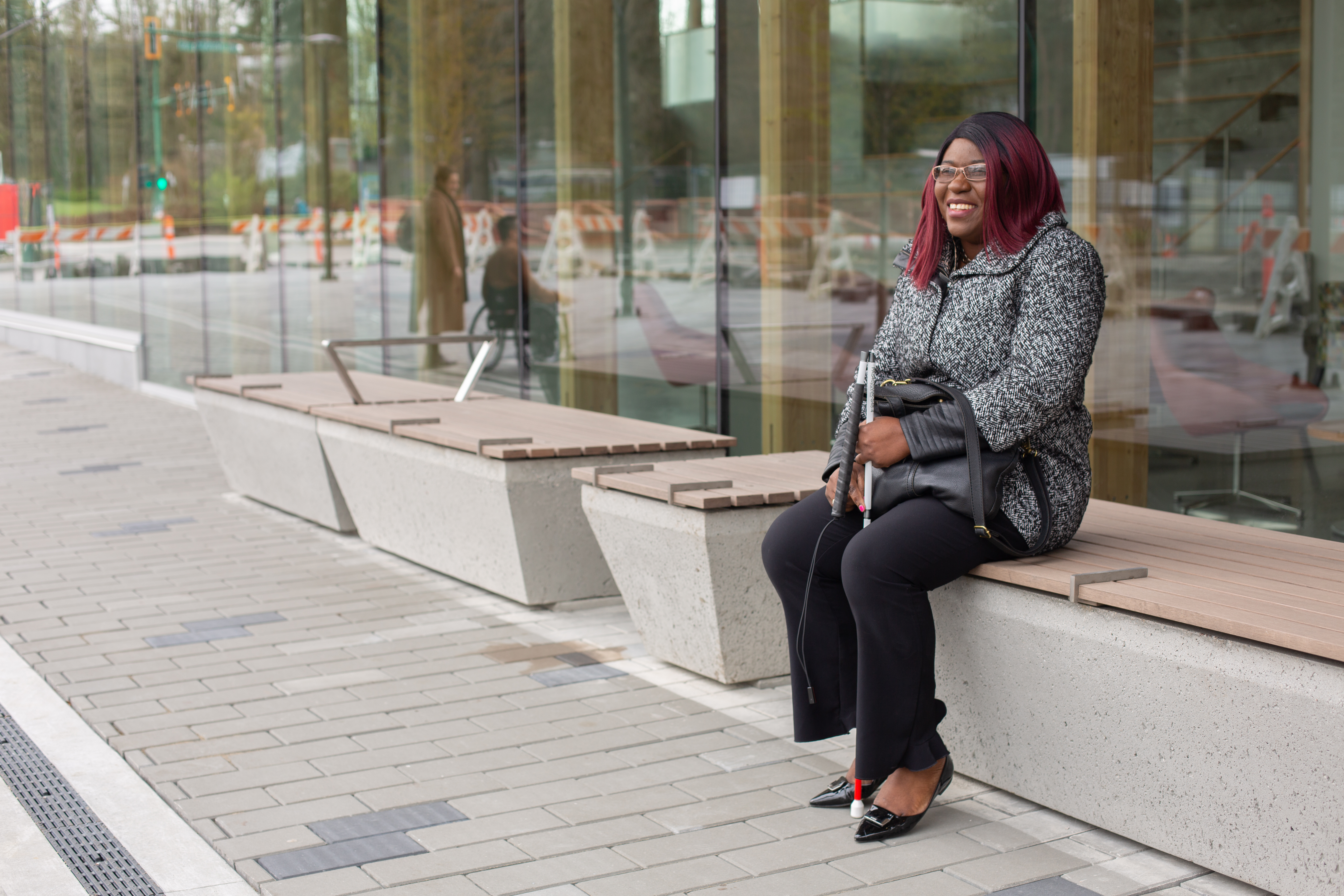
Myth: Disability is a Tragedy
Many consider those with disabilities tragic figures who have befallen terrible circumstances. However, the real tragedy is how the world is built. Human beings are remarkably capable of adapting to many situations; however, the physical environment is not.
The most recent World Health Organization (WHO) estimate suggests that about a billion people have a disability – that’s 15% of humanity. Here, that translates to 1 in every 5 Canadian. That’s a good chunk of the population that faces barriers to access the places where we live, work, learn, and play.
The built environment does not allow everyone to go everywhere. For example, think of buildings that only have stairs instead of well-designed ramps that everyone can use. Hallways with no colour contrast, making navigation difficult for those with vision loss. Restaurants with no sound-dampening features so conversations have to be at shouting volume.
“Restaurants are usually horrible for sound,” said Rebecca. “If it isn’t the din of loud conversations and clattering dishes, it’s the thumping music. I recently went to a dinner party at a lovely restaurant that was packed. My date wore a tiny mic on his shirt collar that connected wirelessly to my hearing aids. It was great for me because I could hear everything he said. But the room was so loud that he could not hear a thing – and he doesn’t even have hearing loss. We couldn’t wait to leave.”
Rebecca added that some restaurants utilize sound-dampening artwork, panels, and/or flooring, which go a long way in creating a pleasant experience for everybody who comes through the doors at minimal cost. “If a restaurant had a hearing loop system, I would feel like I'd won the lottery,” she added.
This is just one example of thinking outside the box regarding the built environment. But we here at the Rick Hansen Foundation are hopeful because when the understanding of disability increases, so does the awareness to create spaces that can be used to the greatest extent possible without the need for adaptation or specialized design that singles out disability.
It’s the built environment that needs fixing, not people.
Myth: People with Disabilities Have Superpowers
Laetitia can’t see, but it doesn’t mean she has developed a sixth sense in its place. If something isn’t working so well, like our ears, eyes, legs or what have you, it’s not like we can develop something that not only makes up for what’s missing but goes beyond it. X-ray vision, supersonic hearing, and powerful robotic prosthetics do not exist outside of comic books (though Rebecca admits being able to fly would be an okay tradeoff for her poor hearing).
“This is a myth I’ve encountered due to my blindness,” said Laetitia. “I have actually been asked about my hearing and how good it must be because I cannot see.”
However, some studies show that other senses can become more acute to compensate as the brain can re-purpose unused spaces in the sensory and motor cortices. People with disabilities are creative problem-solvers who often find new ways of doing things out of necessity.
Which ties in nicely with our next myth…
Myth: People with Disabilities Are Unable to Work
This shouldn’t be a newsflash, but people with disabilities have the same dreams, goals, and needs as everyone else. This includes the desire – and ability – to work. One of the biggest barriers preventing people with disabilities from working is employers themselves.
According to a recent Angus Read Institute public opinion poll, 39% of people with disabilities say that companies are bad or terrible when it comes to supporting employees with disabilities. And 40% of people with disabilities say that corporations are bad or terrible when hiring people with disabilities. Most Canadians – 91% -- say it’s unacceptable that people with physical disabilities are underemployed because of workplace barriers.
Attitudinal barriers play a role here. Many employers assume adjustments or modifications to accommodate will be expensive. In reality, 60% of accommodations cost nothing, and if they do, it’s usually less than $500 per person – a small price to retain a good employee.
Many CEOs with disability confidence report that having a diverse staff that includes people with disabilities brings innovative ideas to the table. Not to mention higher profit margins: a disability-inclusive business strategy promises a significant return on investment; 28% higher revenue, double net income, and 30% higher profit margins, according to the Valuable 500, a global network of CEOs committed to disability inclusion.
As the Honorable Minister Carla Qualtrough said at RHF’s #APN2021 Accelerating Accessibility conference: “You will not find a more innovative, creative problem-solving group of citizens than Canadians with disabilities,” she said.
“We have, for all of our lives, lived in a world that wasn’t built for us, that wasn’t built or designed with our needs in mind. Out of necessity, we’ve become creative thinkers and innovative. We take risks. We think outside the box because the boxes don’t actually work for us.”

Myth: A Disability Means You Aren’t Smart
People with disabilities are simply people. It’s as straight-forward as that. Being blind, hard of hearing, or using a wheelchair does not automatically mean they’re confused, unable to understand what you’re saying, or unintelligent.
Laetitia not only has several degrees but learned to speak and write English in a short amount of time after she arrived in Vancouver, arriving here via Quebec from her home country of Gabon, Africa. Most of her studying was done by memorization as the traditional method of reading books was inaccessible by design. And still…
“Sometimes people treat me like I am a dummy,” said Laetitia. “It’s very frustrating, especially as I view my blindness as just one sense being down. It doesn’t make me less of a person. I just want people to treat me like a human being.”
